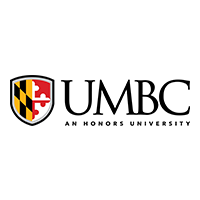Below is a summary of the abstract you submitted. Presenting author(s) is shown in bold.
If any changes need to be made, you can modify the abstract or change the authors.
You can also download a .docx version of this abstract.
If there are any problems, please email Dan at dar78@pitt.edu and he'll take care of them!
This abstract was last modified on March 18, 2024 at 11:14 a.m..

Bacteriophages, also known as phages, are viruses that are capable of infecting bacteria. GiJojo was isolated from a soil sample collected from the University of Maryland, Baltimore County campus using Streptomyces mirabilis as the bacterial host in September of 2023. Transmission electron microscopy revealed that GiJojo has a short contractile tail, which is a unique feature exclusive to myoviruses. GiJojo is one of the few myoviruses characterized by SEA-PHAGES that infect Streptomyces hosts. DNA was extracted and sent to the University of Pittsburgh for sequencing using the Illumina platform. GiJojo was shown to have a genome 115 KB long with 197 bp direct terminal repeats and a GC content of 53.5%. GiJojo was also determined to be a part of the BS cluster, the only cluster of Streptomyces infecting myoviruses at this time. Gene annotation of the sequenced GiJojo genome was completed using DNA Master with internal Glimmer and GeneMark programs to examine the codon usage of open reading frames and putative ribosome binding sites, further confirmation by host-trained GeneMark.hmm and sequence homology to previously identified genes by BlastP. Putative functions were assigned by sequence homology using BlastP and the NCBI Conserved Domain Database, structural homology using HHpred, and synteny using Phamerator. During the investigation of GiJojo’s gene functions, significant genetic similarity to Streptomyces myoviruses Alone3, LuckySocke, and BRock was found, emphasizing the relationship of GiJojo with other members of the BS cluster. Additionally, GiJojo gp95 showed conserved domains for the small spike protein at the tip of the T6SS needle that breaches host cells, suggesting that GiJojo uses a system similar to type IV secretion systems in bacteria. Further investigations will involve visualizing evolutionary branch events amongst related phages using orthologous endolysin, RecA-like DNA recombinase, and small spike protein genes. Examining these changes could reveal patterns of phage-host interactions, bacteriophage adaptation to drugs, host antiviral defense, and life cycle of GiJojo and the BS cluster.





